After visiting yet another of the master-pieces made by architect Sinan which I mentioned in the previous travel story about Istanbul, now we were about to see something quite different, but first Sneža and I continued walking along the Theodosian Walls from the interior side.
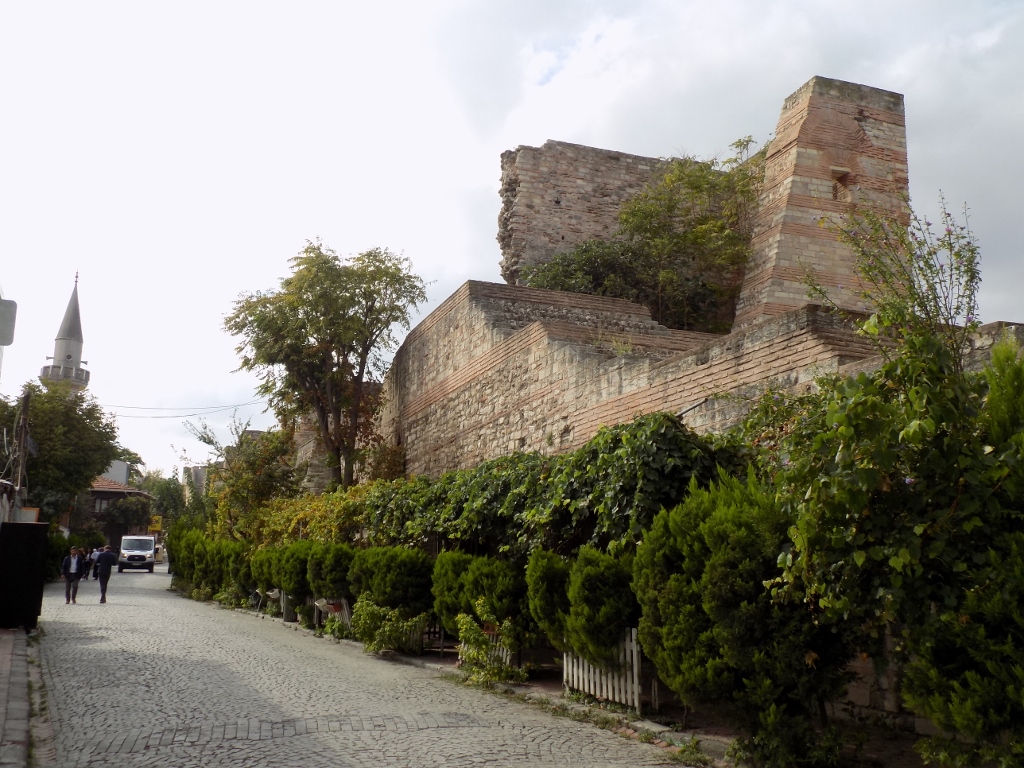 Theodosian Walls from the interior side
Theodosian Walls from the interior side
This time we were walking towards the former palace of the Porphyrogenitus or the Tekfur Saray. This is in fact the only remaining section of the former complex of a Byzantine imperial palace that extends from the walls, while at the same time it is the best preserved Byzantine palace in the city.
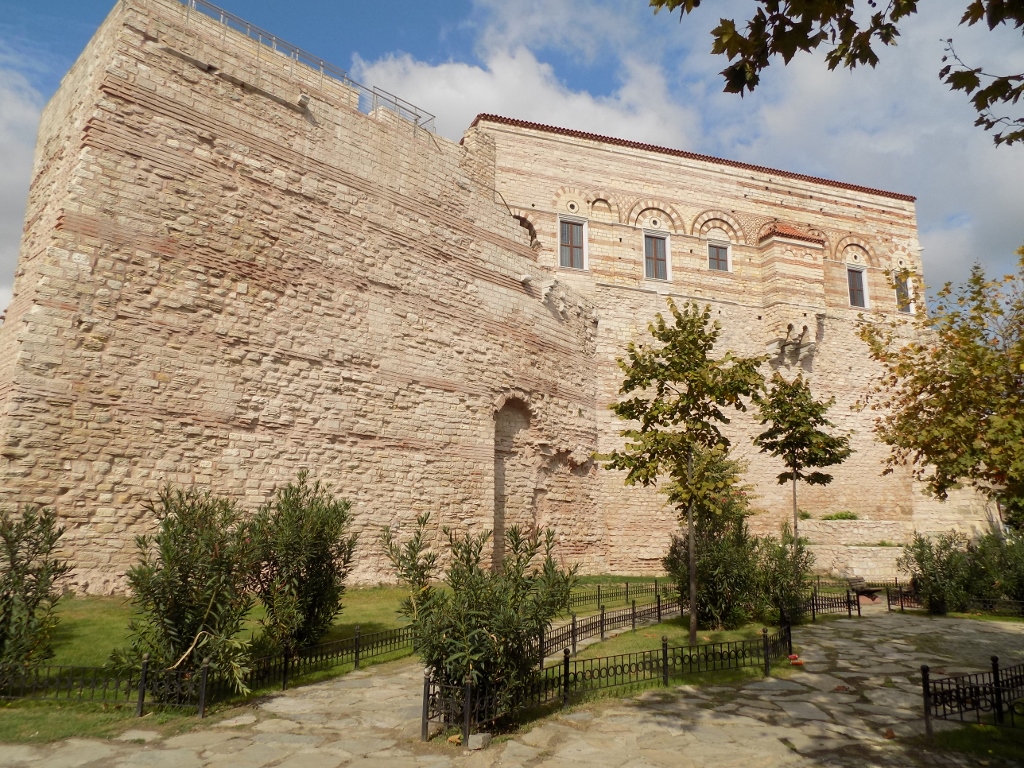 Palace of the Porphyrogenitus or the Tekfur Saray
Palace of the Porphyrogenitus or the Tekfur Saray
Admittedly, until recently the palace existed as a mere shell, accessible only to experts, but then a restoration started and the palace was finally opened to public precisely in the year 2019. Right in time for our visit.
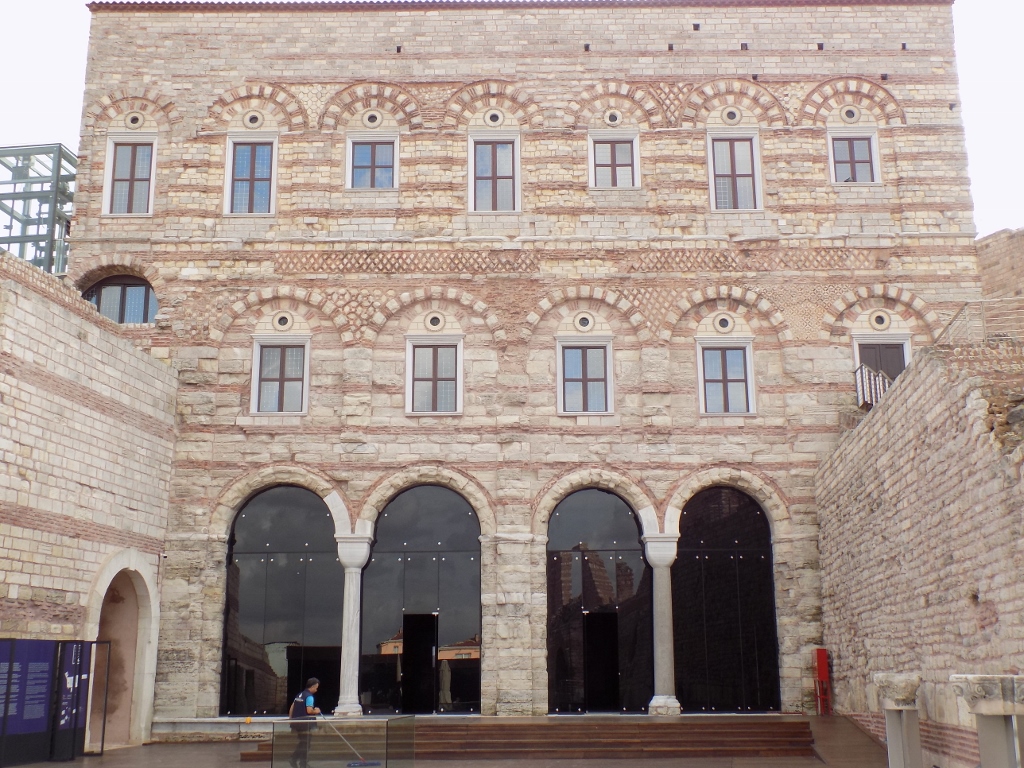 Palace of the Porphyrogenitus
Palace of the Porphyrogenitus
Today it houses a rather modest museum of pottery, but I still enjoyed the visit, while the venue is exceptionally attractive with its old architectural glory.
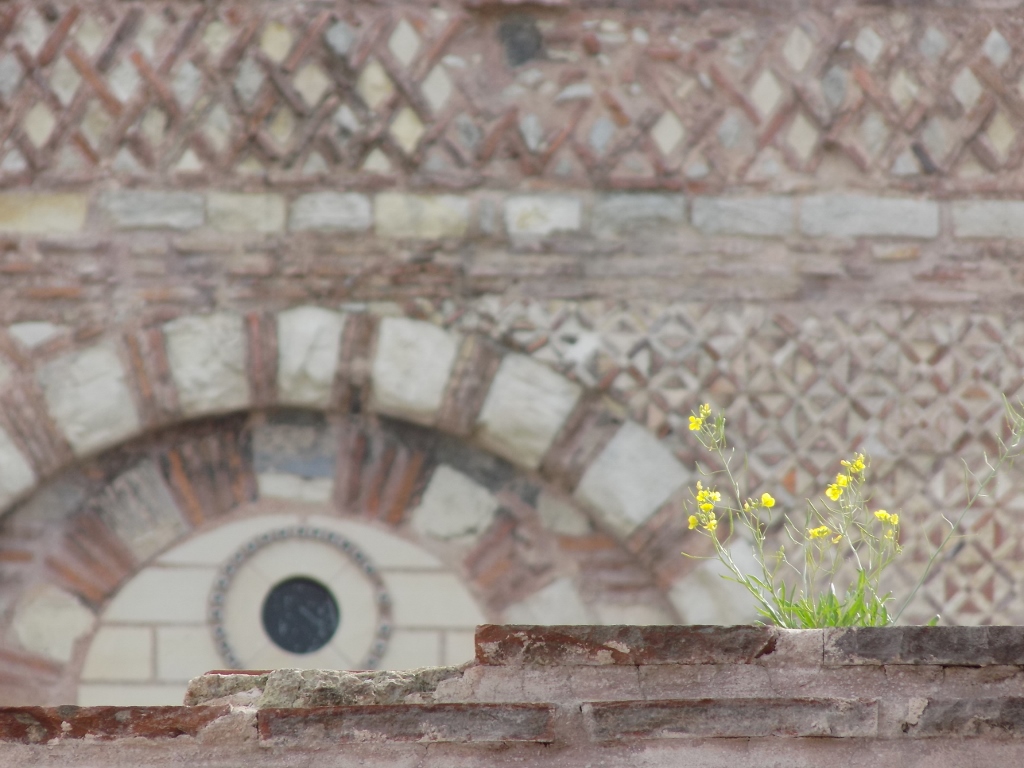 Palace of the Porphyrogenitus; a detail
Palace of the Porphyrogenitus; a detail
If one wants to visit this place, it is important to bear in mind that it is only some five minutes away on foot from the Chora Museum, the former church with outstanding mosaics, for which I think that it should be an unavoidable place during a visit to Istanbul (https://www.svudapodji.com/en/istanbul-6/). In other words, it is not necessary to tread for 6 km from the coast of the Sea of Marmara to get here. It was only Sneža and I who did that.
But, by this time, the two of us were ready to make a lunch break. For this purpose we went down the hill towards the Golden Horn bay. This area is rather picturesque, there are pretty streets with stairs instead of pedestrian pavements, but we were also very pleased with our visit to a local restaurant where we went to eat something.
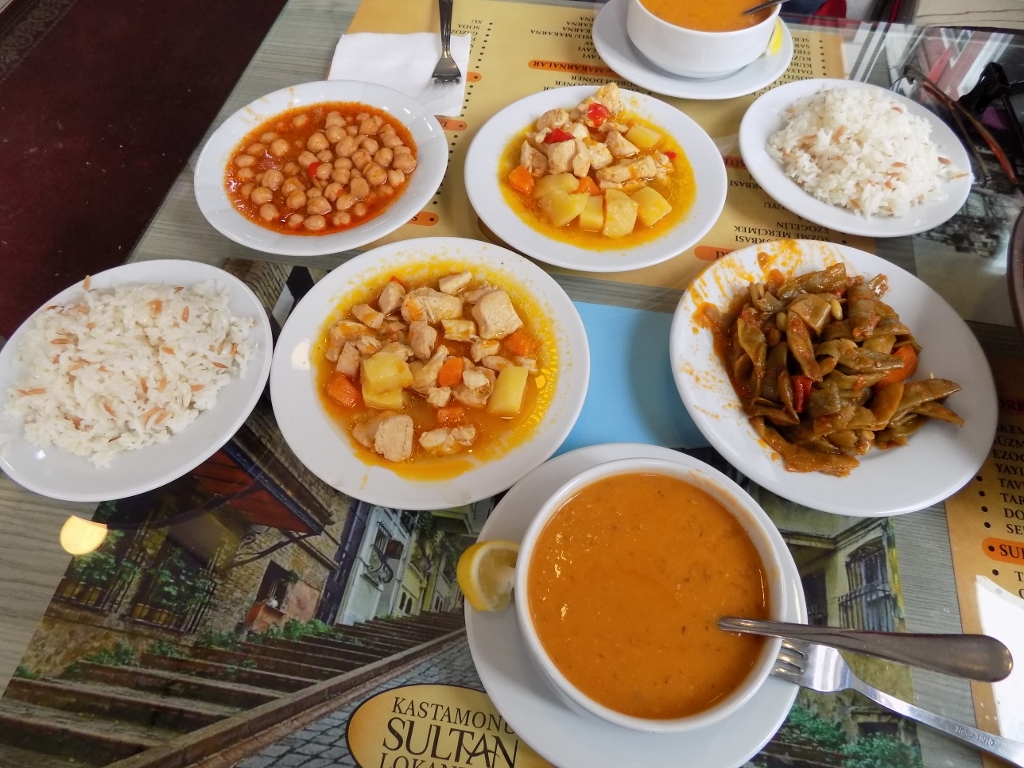 Good lunch at a local restaurant
Good lunch at a local restaurant
The next destination of ours was the Bulgarian St Stephen Church.
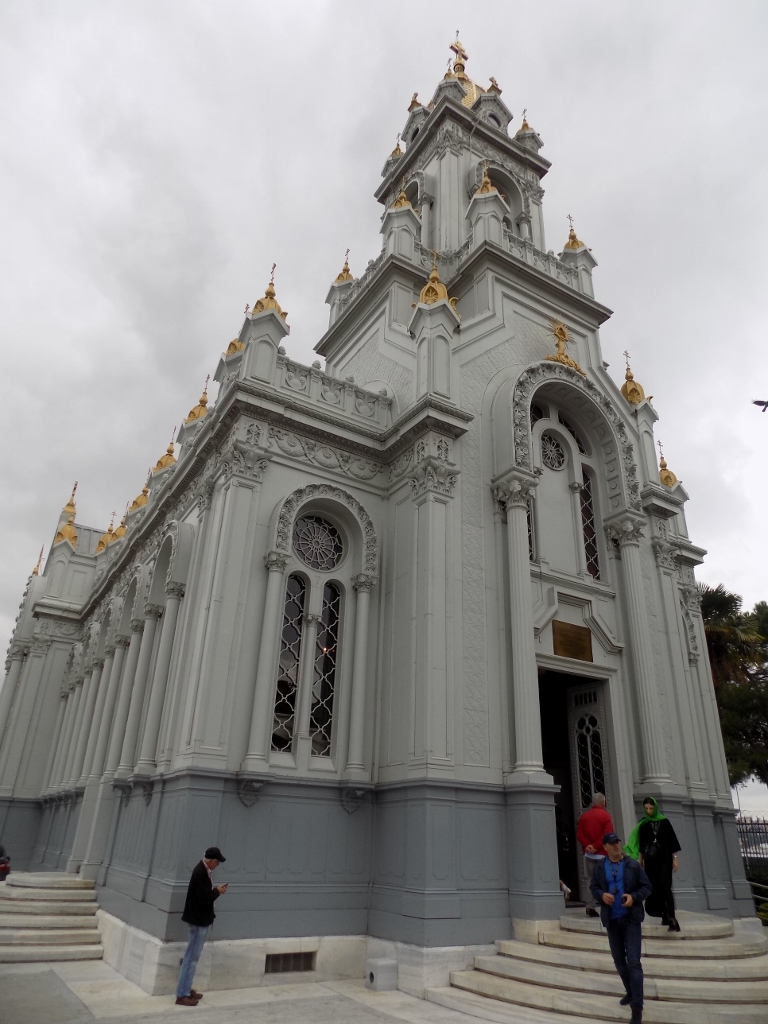 Bulgarian St Stephen Church
Bulgarian St Stephen Church
What makes this church from the second half of the 19th century very special is the fact that it was made of iron! The church was in fact as a pre-fabricated building first made in Vienna, Austria, and then its segments were bought here by ships sailing down the Danube, after which it was assembled here on the spot.
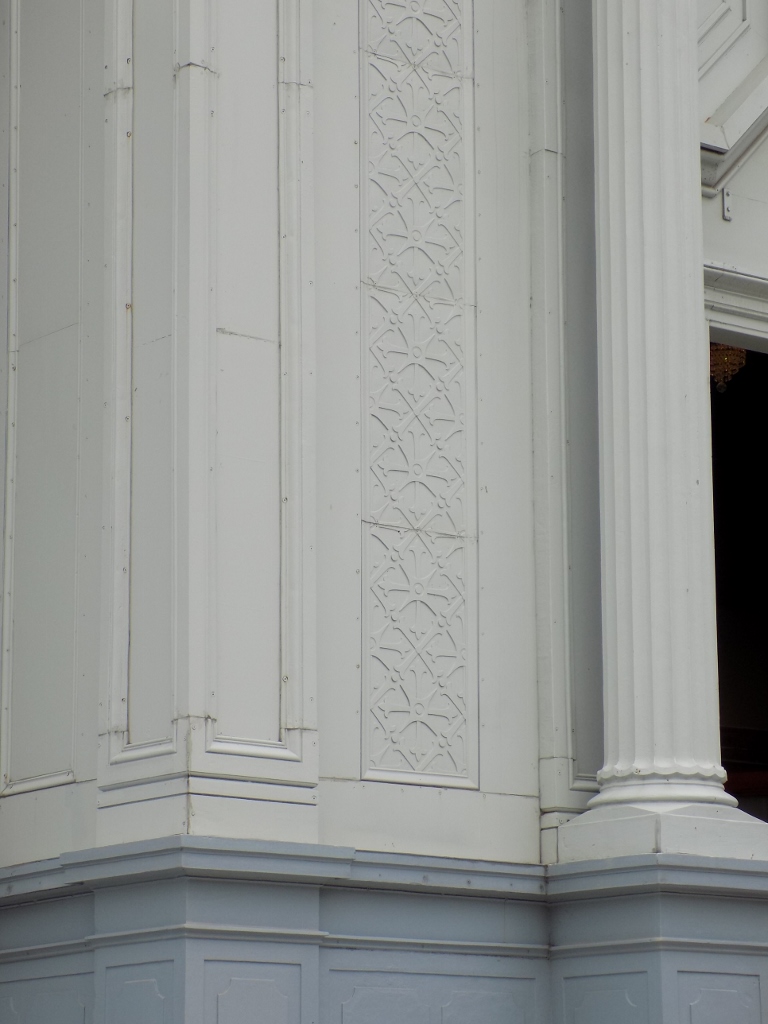 You can see nicely joints of metal plates on the facade
You can see nicely joints of metal plates on the facade
Still, this church is equally impressive when you go in as well. There is also an upper floor that one can climb to and perhaps the view at the interior may be even better from there.
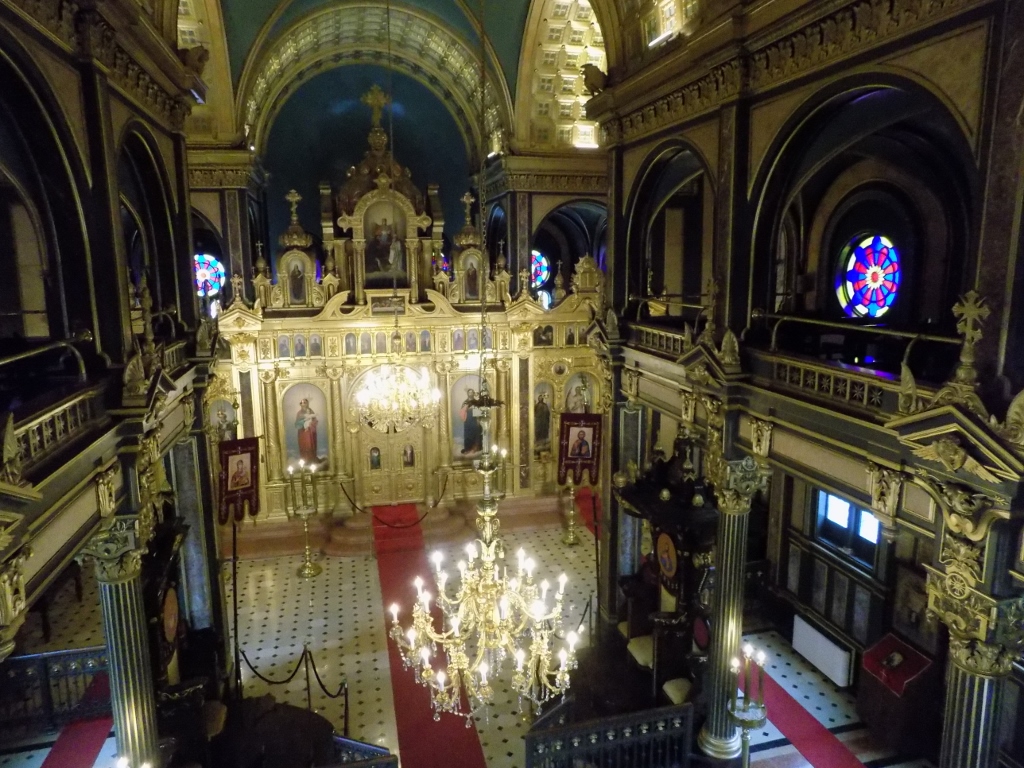 Bulgarian St Stephen Church
Bulgarian St Stephen Church
Again, not very far from here there is the Ecumenical Orthodox Patriarchate, the seat of one of the autocephalous churches which all together constitute the Orthodox Christian Church. As opposed to the Catholic Church, the Orthodox Church does not have a supreme authority (in terms of the Pope), but the Ecumenical Patriarch is considered “first among equals” or primus inter pares and his seat is at the Church of St. George in Istanbul.
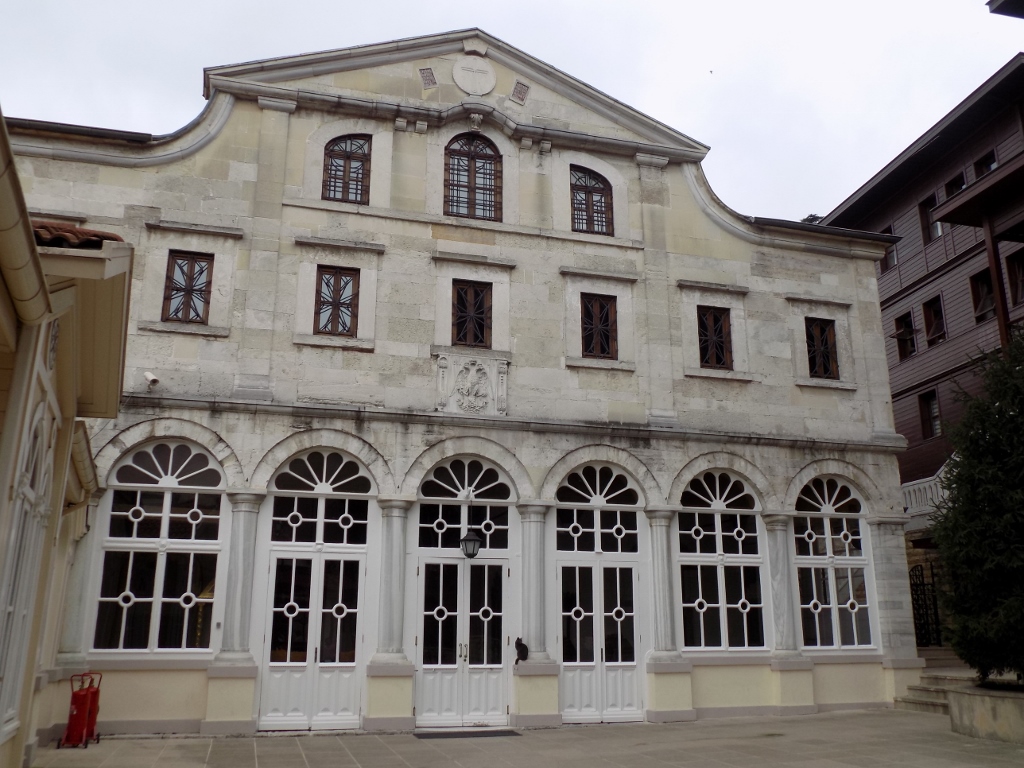 Church of St. George
Church of St. George
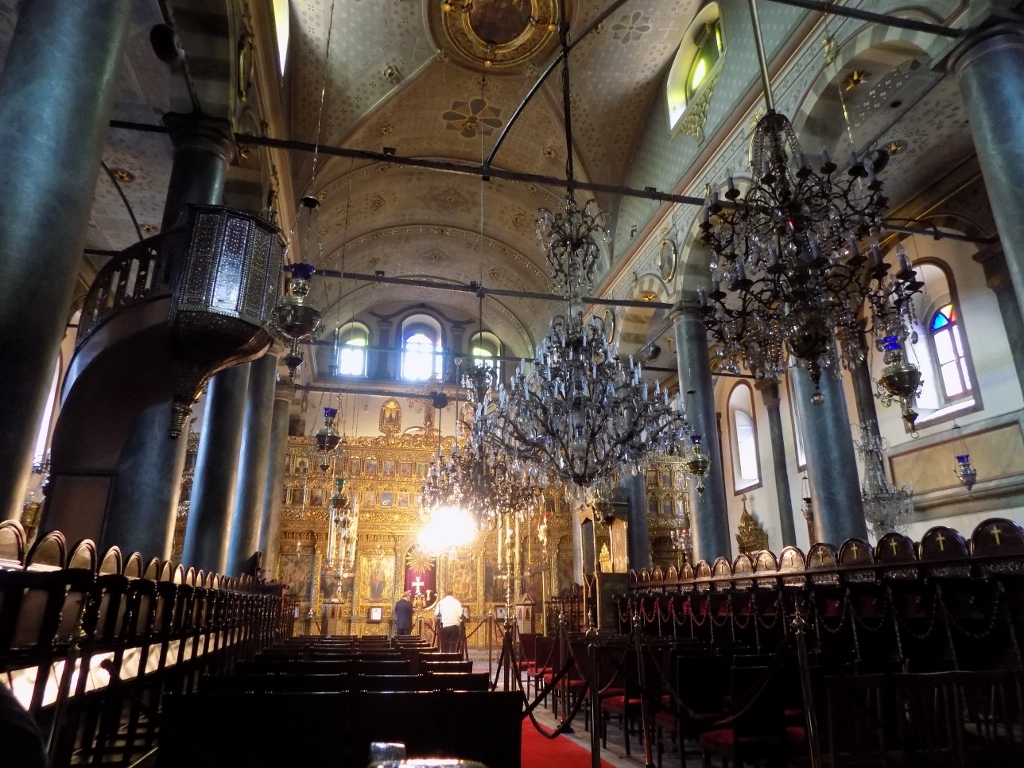 Church of St. George
Church of St. George
In order to get to this basilica, it is necessary to go through a strict security check-up, since there is a threat that the place may be attacked by some extremist groups.
Since I’m talking about inter-religious dislikes, I must mention some of my thoughts. Judging by the frequency of mentioning quarters in Istanbul where Orthodox or Jewish or Catholic populations used to live, I could not help the impression that the Ottomans were in a way quite tolerant. There is absolutely no doubt that they were cruel and merciless whenever they felt a need for that, particularly during conquests and maintenance of power in the occupied territories, but they also occasionally showed exceptional tolerance towards members of other religions. Much more than many others, I would say, especially bearing in mind that in the middle of their capital where the Ottomans were unquestionably absolute and indisputable rulers there has been the seat of the spiritual leader of a large Christian church in existence since 1600.
Following this visit, we went down to the street leading along the Golden Horn and there we caught a bus that took us further to the north of the city all the way to the area where there is the Eyüp Sultan Mosque. Still, before going to this exceptionally important mosque, we headed for the tomb of the Grand Vizier Sokollu Mehmet Pasha. It is precisely the place where this Grand Vizier was buried that suggests how powerful he was when he managed to ensure the location for the final dwelling for his physical body that is so close to the Eyüp Sultan Mosque. As I’ve mentioned before, on this day when the two of us were here, 11 October 2019, it was exactly 440 years since the assassination of this Ottoman vizier of Serbian origin. That was somehow the reason for coming to his grave on this day. In addition to his grave which was designed by Mimar Sinan in 1568-1569, the complex also used to include a medresa, as well as a school, but only the türbe has kept its function.
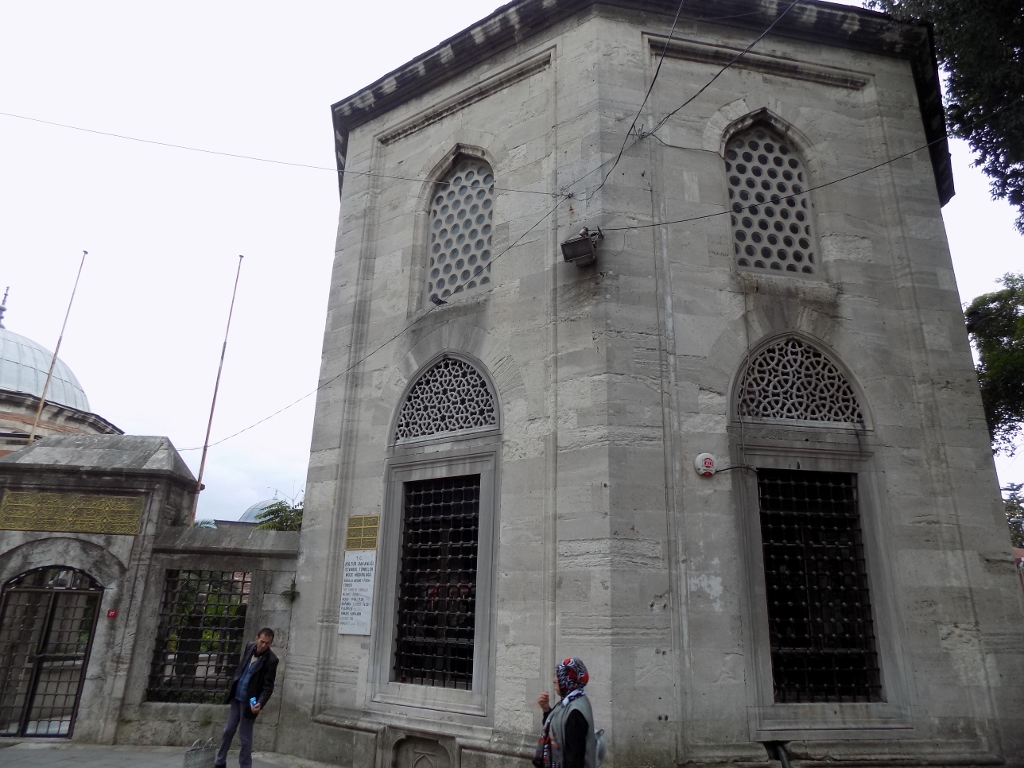 Türbe of Grand Vizier Sokollu Mehmet Pasha
Türbe of Grand Vizier Sokollu Mehmet Pasha
However, we were 15 minutes late and the türbe was already closed for visitors. Taking into account that earlier that morning we could not enter the mosque built by this Grand Vizier, as well as that we were late so little, I concluded that for some reason Sokollu Mehmet Pasha was not really in the mood to receive us on this day. Well, what can you do? So, we just made a circle around the sepulchre and peered a little through a window. The tomb of the Grand Vizier was covered with some plastic, so perhaps there may have been some works going on, but it was also possible to see tombs of several of his children there.
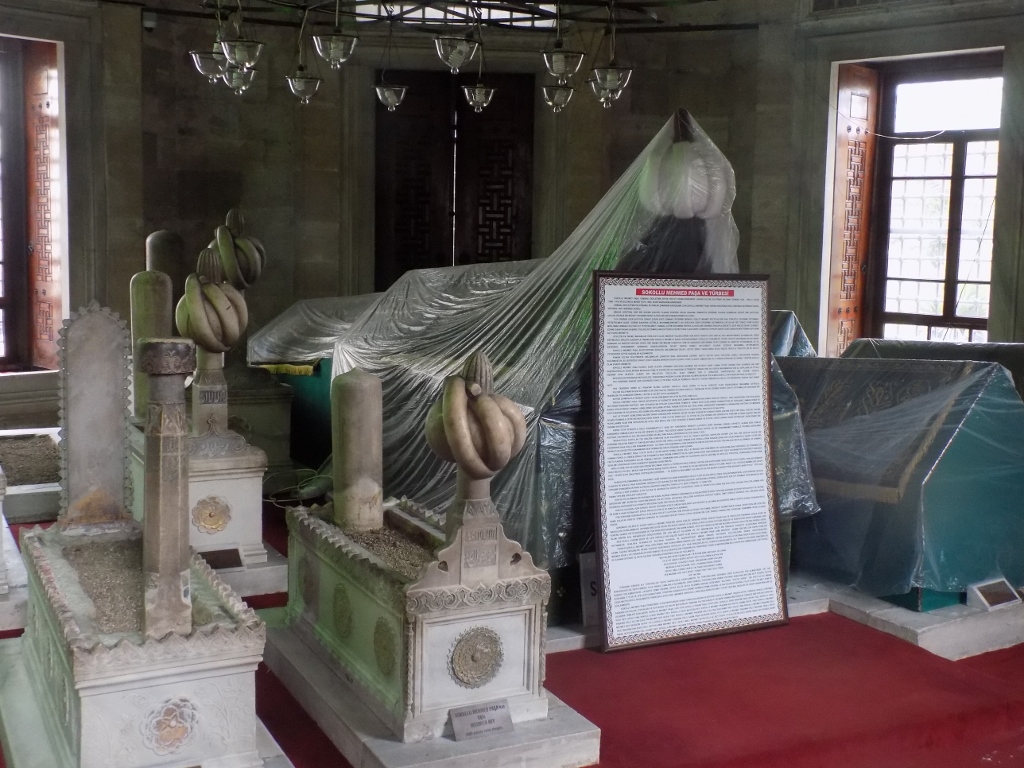 Türbe of Grand Vizier Sokollu Mehmet Pasha, the interior
Türbe of Grand Vizier Sokollu Mehmet Pasha, the interior
After this, we headed for the Eyüp Sultan Mosque. The Ottomans built a mosque complex in this place already in 1458, i.e., only five years after taking Constantinople. The reason for this is that there is a belief that the standard-bearer and friend of Prophet Muhammad was buried here and for this reason it is the most sacred mosque in Turkey. It is at the same time the oldest one by its duration, calculating from the first mosque built in this place, but because it kept being damaged, eventually it was completely demolished and in the same place in 1800 the edifice that may be seen today was built. By the way, that saint whose mausoleum is located here was called Abu Ayyub al-Ansari in Arabic or Eyüp Ensari in Turkish, hence the name of the mosque.
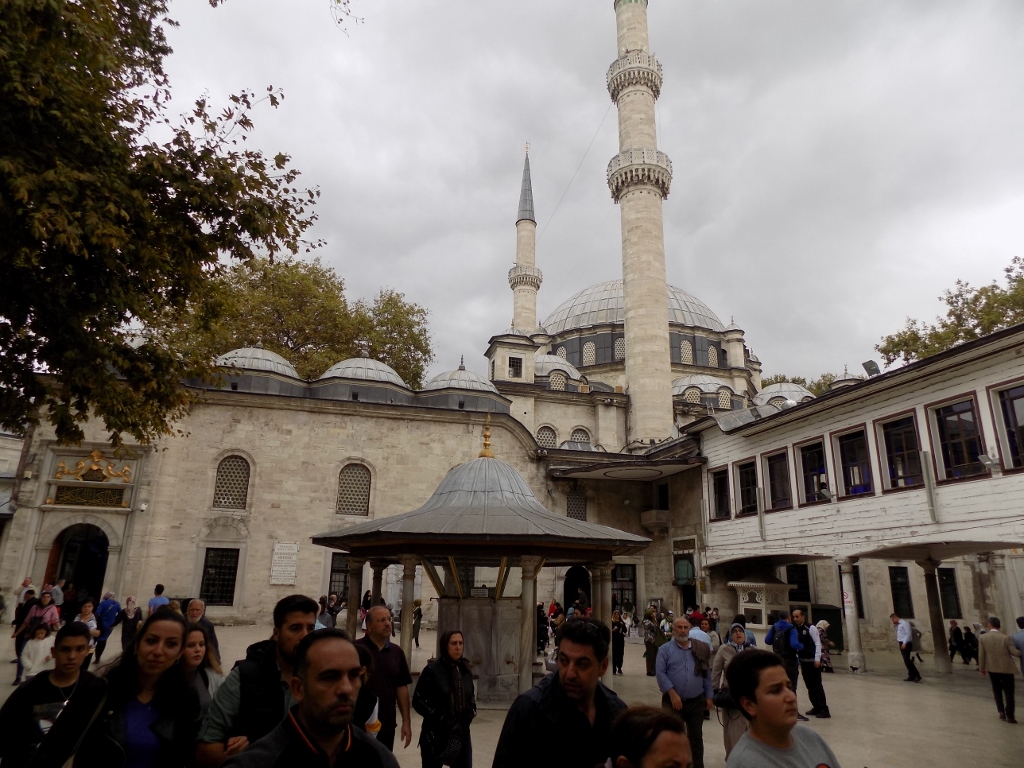 Eyüp Sultan Mosque
Eyüp Sultan Mosque
Sneža and I first went to visit the türbe of Abu Ayyub al-Ansari that is located in the forecourt of the complex directly opposite the entrance into the mosque itself.
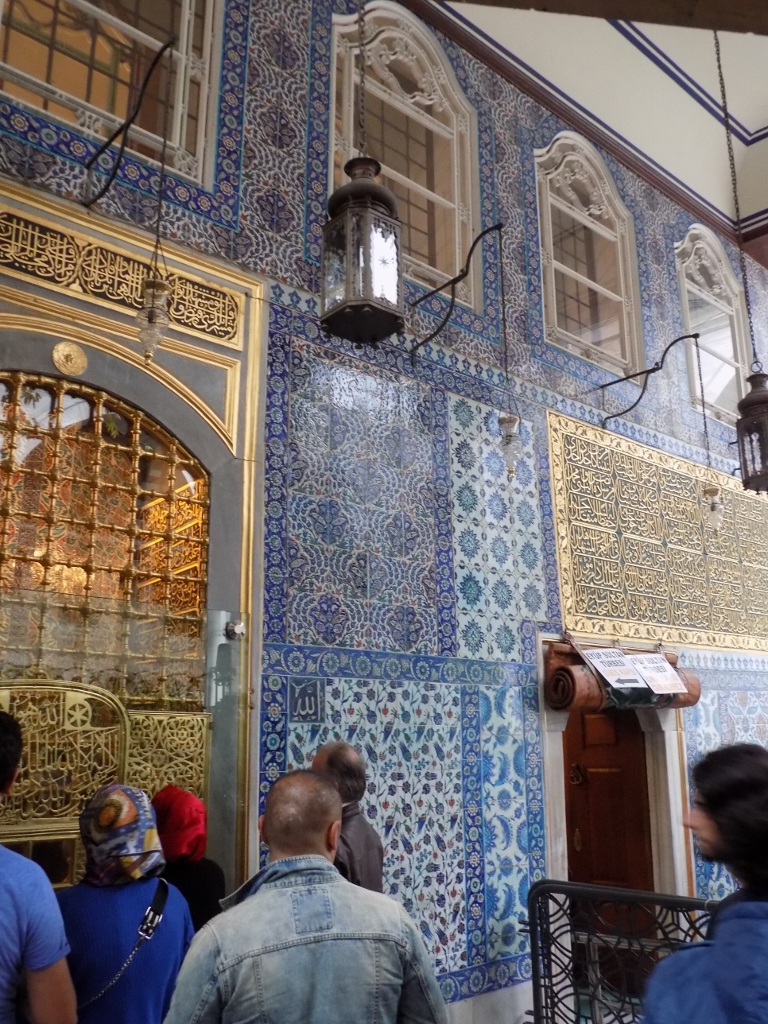 Türbe of Abu Ayyub al-Ansari, i.e., Eyüp Ensari
Türbe of Abu Ayyub al-Ansari, i.e., Eyüp Ensari
As it was proper, we took our shoes off, while our heads were covered by scarves all the time, and we entered the sepulchre. Taking into account that this is the tomb of a saint, at first I felt uncomfortable about taking photos, since I did not know whether that would be appropriate in such a holy place, but seeing that everybody around me was taking photos all the time, I followed suit.
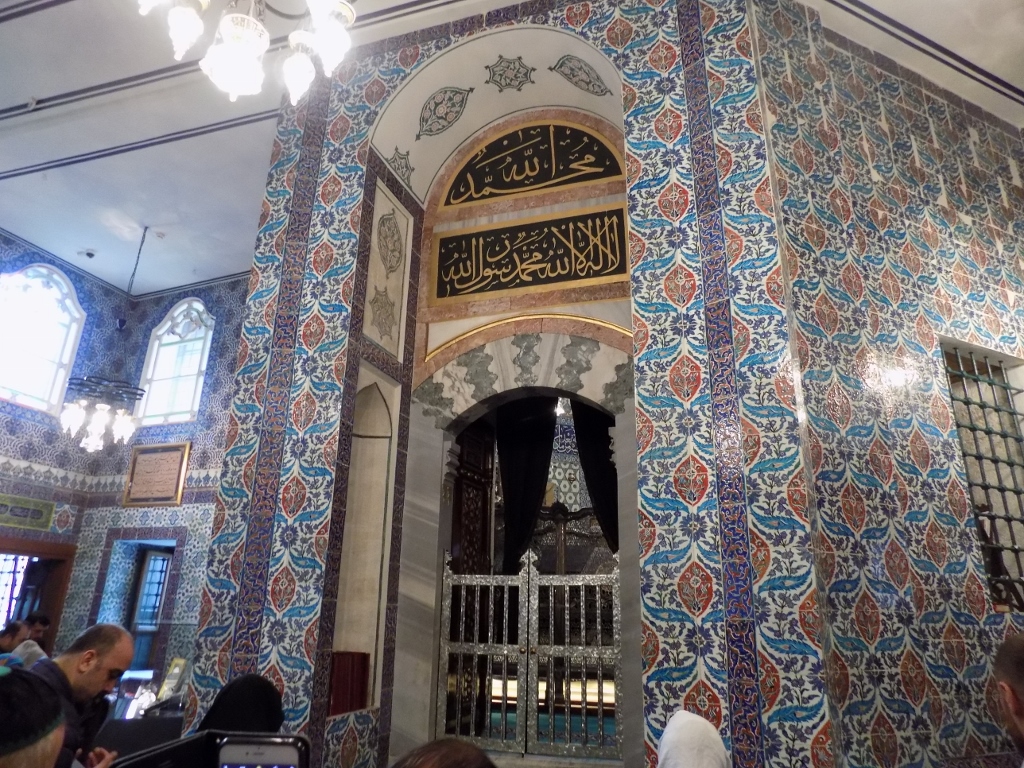 The actual tomb of Eyüp Ensari is behind the metal gate seen in the photo
The actual tomb of Eyüp Ensari is behind the metal gate seen in the photo
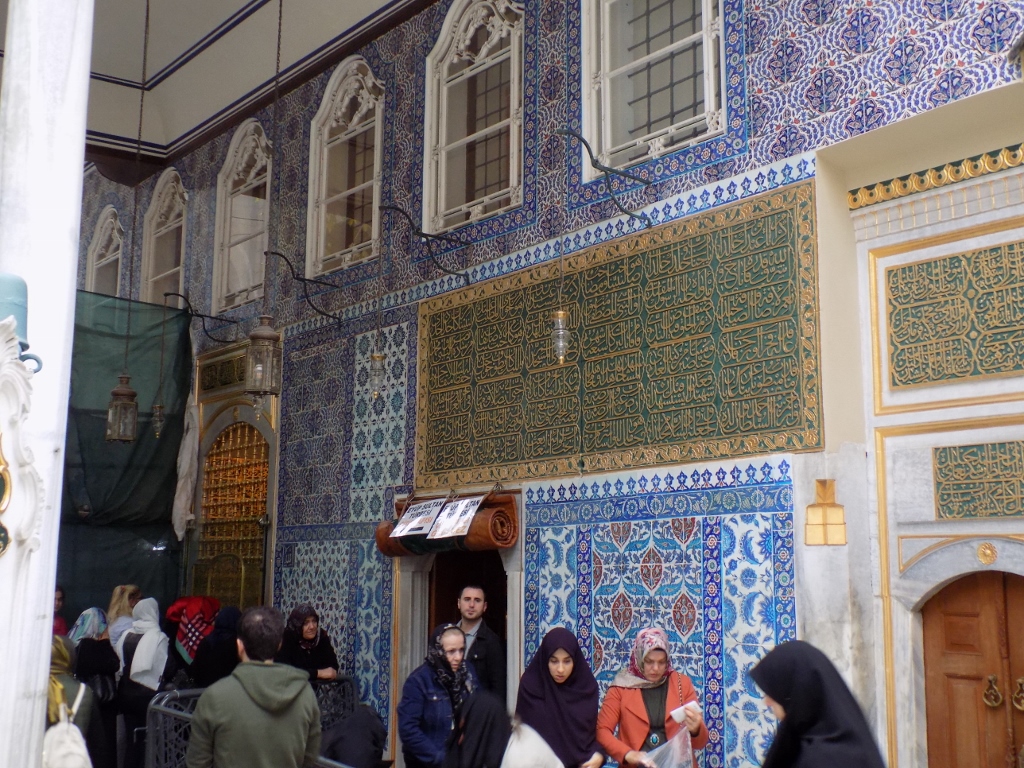 Exit from the türbe of Eyüp Ensari
Exit from the türbe of Eyüp Ensari
After coming out from the tomb of Eyüp Ensari, we went across the courtyard, i.e., we entered the Eyüp Sultan Mosque. It is also exceptionally beautiful and harmonious. It was at this mosque that the coronation of the Ottoman sultans was traditionally conducted.
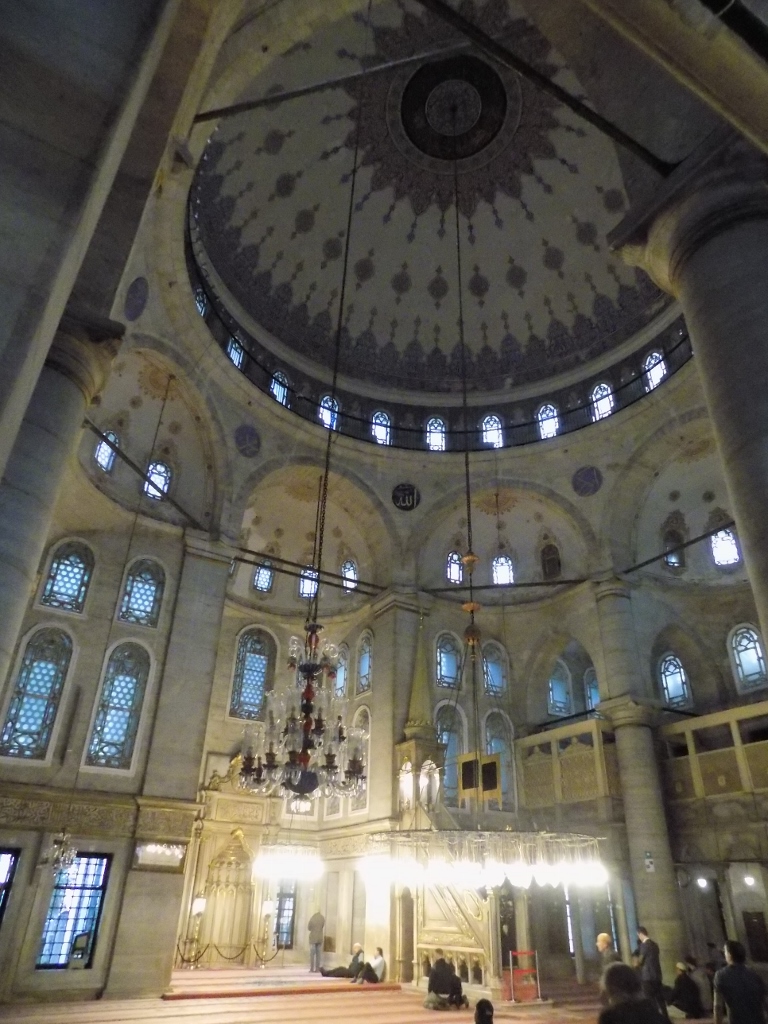 Eyüp Sultan Mosque
Eyüp Sultan Mosque
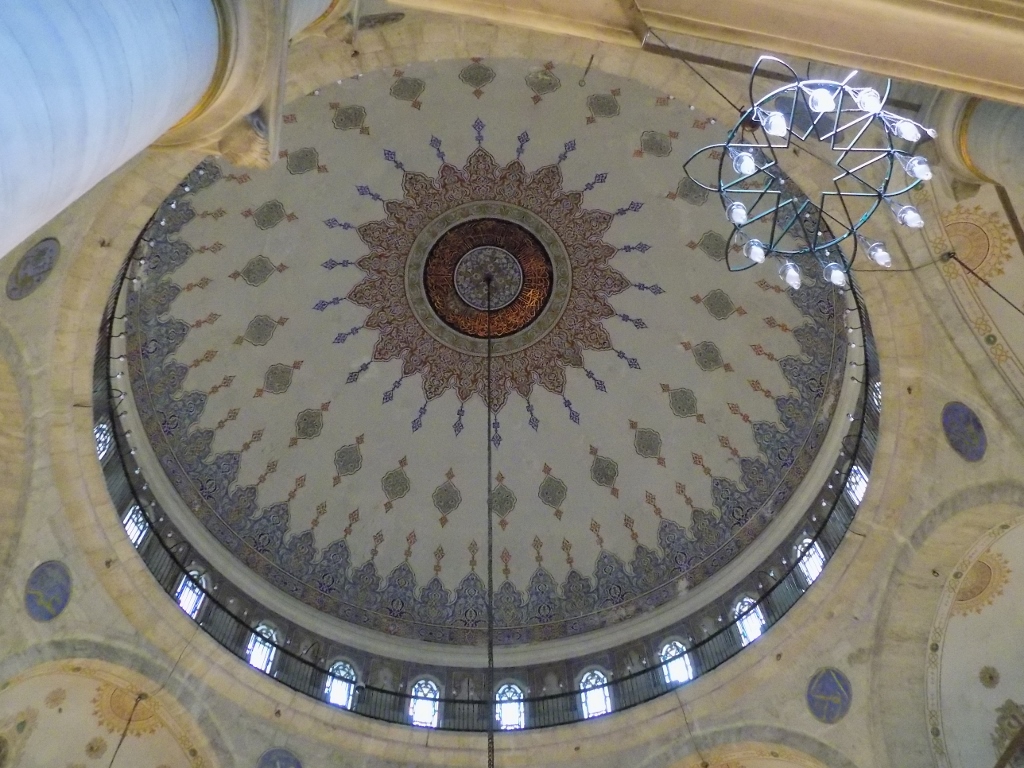 Eyüp Sultan Mosque: harmoniously decorated dome
Eyüp Sultan Mosque: harmoniously decorated dome
We spent some time in the mosque, then we came out and practically at that point we finished with the sightseeing for the day. But, that did not mean that we did not plan to go to a very special place.
Namely, before leaving for Istanbul, I met with my (and Sneža’s) friend Vuk and he recounted about Istanbul in many a great detail and with lots of love. When he was still a little boy, he used to spend a good share of his summer holidays there since he has some family living in Istanbul and later his profession (top-class historian of art) often sent him to this meeting point of different nations, cultures, religions and history, so he knows the city like the back of his hand. He gave me a lot of advice with picturesque comments and one of those comments referred precisely to the place Sneža and I headed to after our stay at the Eyüp Sultan Mosque. This was all about a café. What? A café? That sounds rather banal. Perhaps the café itself is, but the place in which it is located is what attracted me in the first place. When he recommended this place, Vuk told me more or less (or rather this is how I understood him) that when one sits here and looks down the Golden Horn it becomes clear why the Ottomans did not develop some major school of philosophy – because when one sits here and looks at what is in front of him, everything about the Universe becomes clear. Well, Vuk probably did not actually say it like that, but I felt like interpreting it in this way, so I said right away to myself and later to Sneža as well, that we must go here because I want everything about the Universe to become clear to me.
Still, in order to get to this special place, it is necessary to have a good uphill hike (the café is almost on the top of a hill), but luckily entrepreneurial Turks have made a good cable-car system that leads practically right to that café we were going to, while the famous city transportation card worked here, as well. Admittedly, when we first went there it was incredibly crowded and we waited in line in order to get into a gondola for quite a while, but eventually we managed. Thus, we came to the Pierre Loti café where we even succeeded in finding a free table for us “in the front row.”
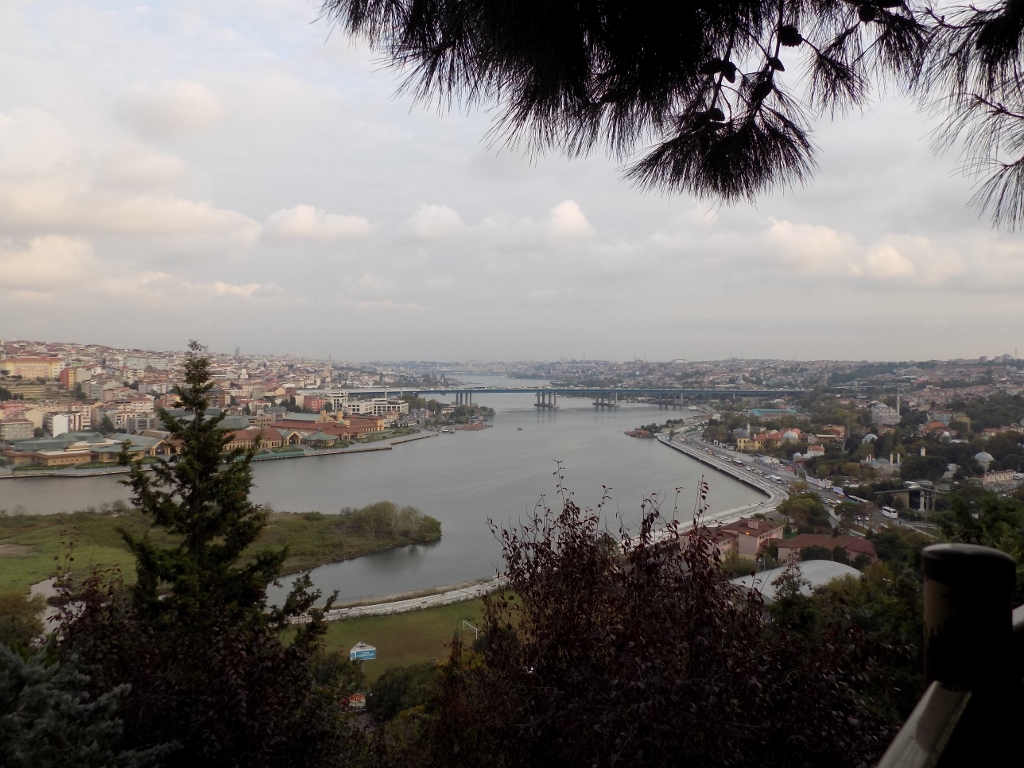 View at the Golden Horn from the Pierre Loti café
View at the Golden Horn from the Pierre Loti café
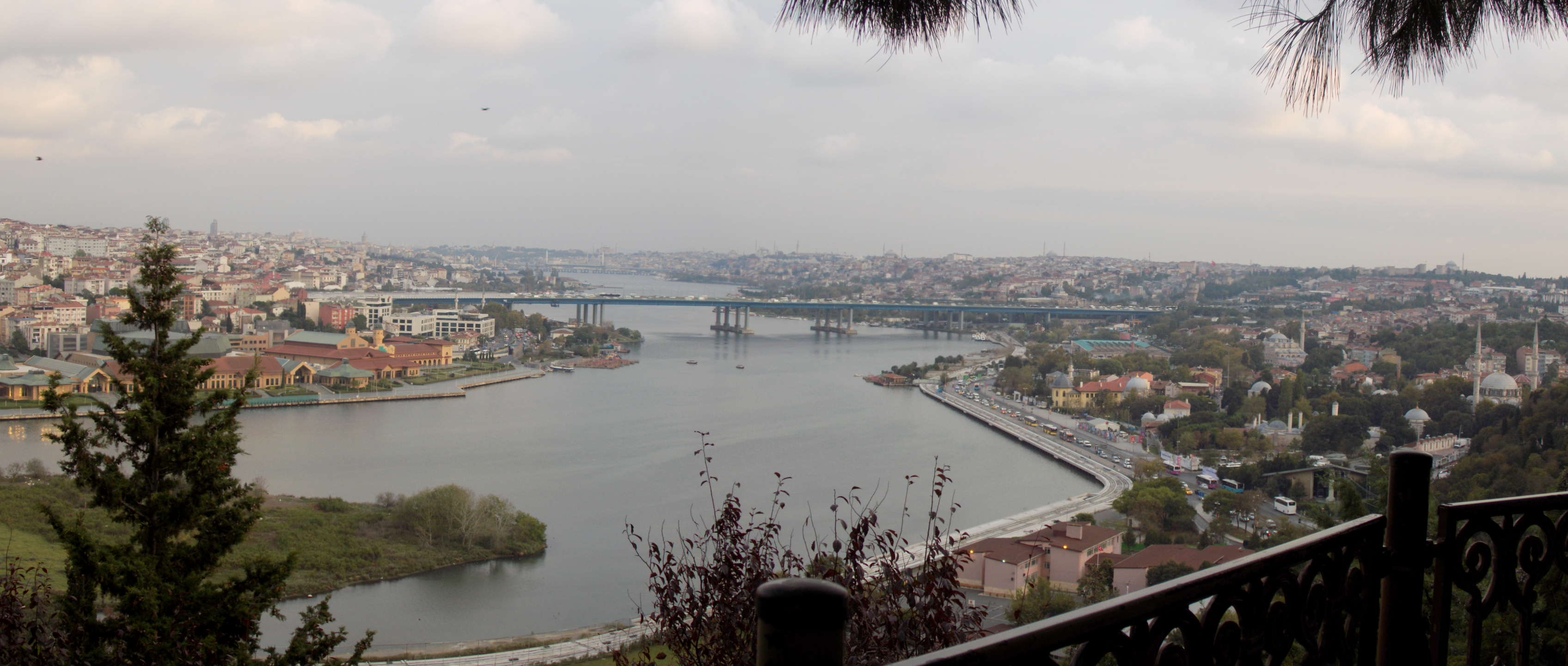
Well, now. As far as “getting everything clear about the Universe” is concerned, one should not have too high expectations, especially when, while you are expecting the deep secrets of our existence to emblaze in your mind, you constantly keep hearing the buzz of other visitors and distant sounds of the traffic of one enormous city, plus you are very tired and although you like it quite a lot you don’t want to stay in this place for too long, because you still need to go back to the hotel in order to get a good night’s sleep and rest well. Still, the view was spectacular indeed.
On the other hand, as Sneža quite correctly pointed out in one moment, the café is actually located in the middle of a cemetery! This is the Eyüp Cemetery which is one of the oldest and biggest Muslim cemeteries in Istanbul. But, as is commonly the case, the dead do not create any problems, even less any noise, so they did not disturb my, as it would turn out, futile attempts to ascertain the essence of the Universe. Well, never mind. Even a little later, when it was starting to get dark and the lights came up, the view continued to be magnificent.
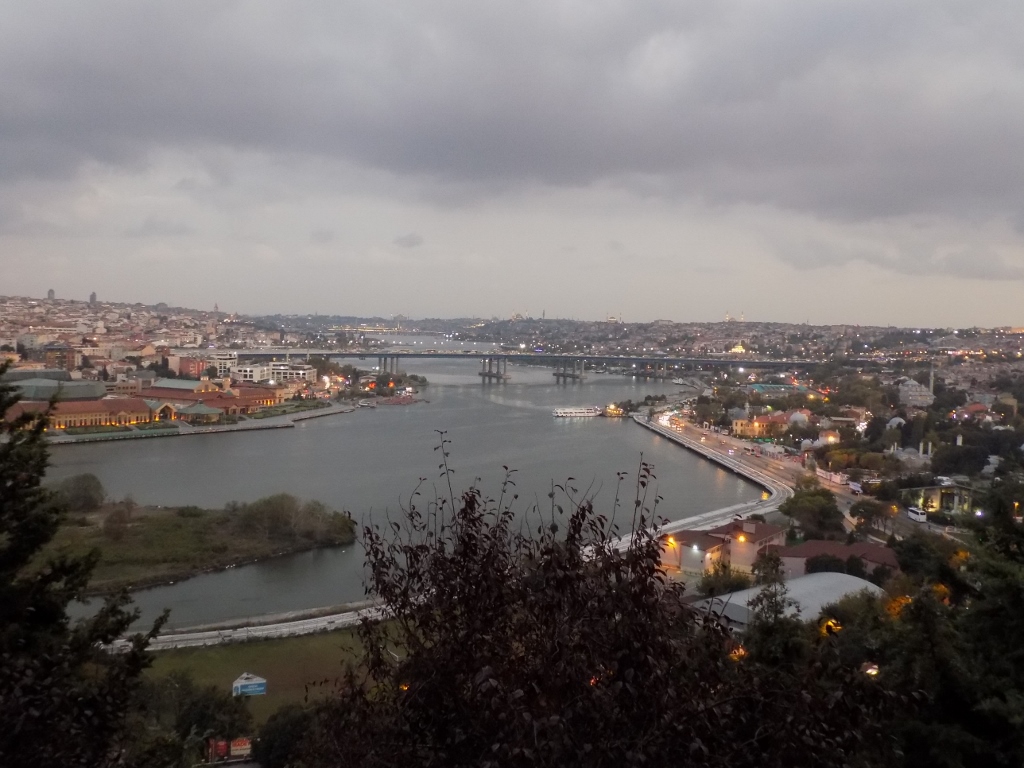 View at the Golden Horn from the Pierre Loti café
View at the Golden Horn from the Pierre Loti café
At some point we took the cable-car back to where we started from, this time without any crowds and then we went to a nearby bus stop.
Originally, I had planned to return to the centre of the city by a ferry that works as city’s public transportation and docks near the place where we were, but we were not sure about the schedule, so we opted for a bus. It turned out that its final stop from here was quite close to our hotel and that was an excellent recommendation for this type of transportation.
Along the way we passed through a street called Fevzi Paşa Caddesi where we had established a couple of days earlier that they offered the best exchange rate, but this is certainly an excellent street for those who want to buy a wedding dress or a dress in which it is possible to imagine that the wearer is a fairy-tale princess. In the evening, the shop-windows dazzled with light and all sorts of glassy beads and tinsels that decorate these lavish (wedding) dresses.
The plan for the next day included very little walking, although we did drive around quite a lot, but this means it was certainly not too tiring. To start with, we went to the place called Rumeli Hisari on the European shore of the Bosphorus strait. There is also a bridge named after Mehmed the Conqueror.
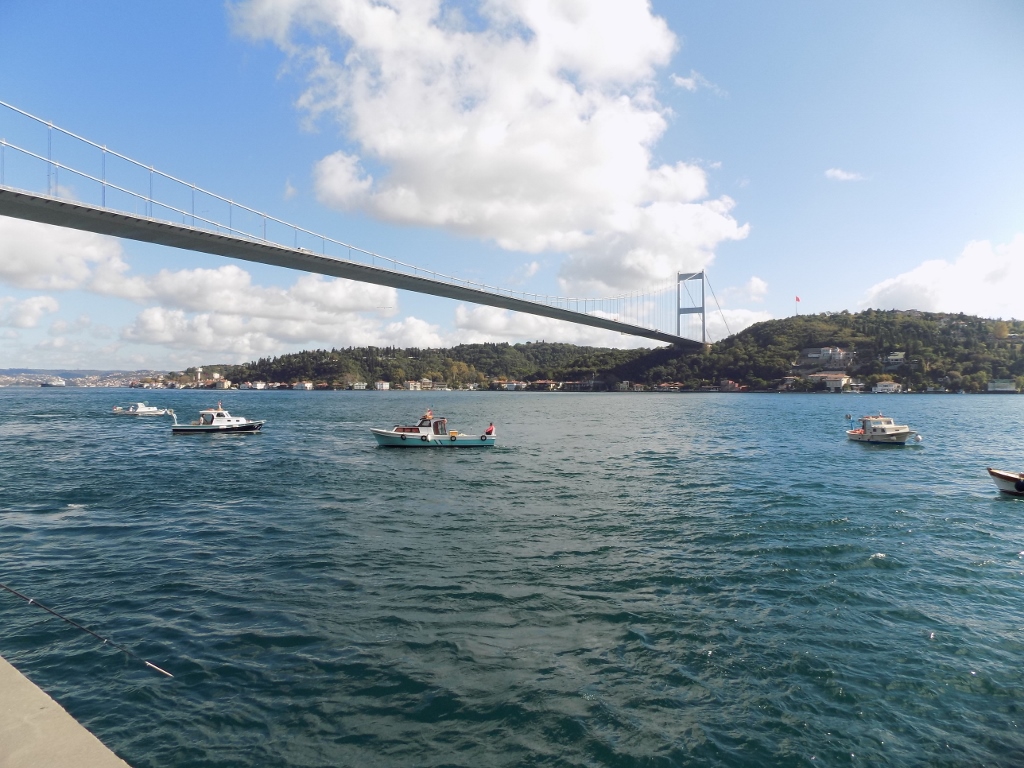 Fatih Sultan Mehmet bridge
Fatih Sultan Mehmet bridge
In this place there is a medieval fortress Rumeli Hisari (the place is actually named after the fortress and not vice versa), which seemed rather impressive to us, but on this occasion we were up only for a nice, leisurely walk but along the shore and later for enjoying warm beverages offered by one of the restaurants-cafés that operate here, particularly bearing in mind the absolutely fantastic weather.
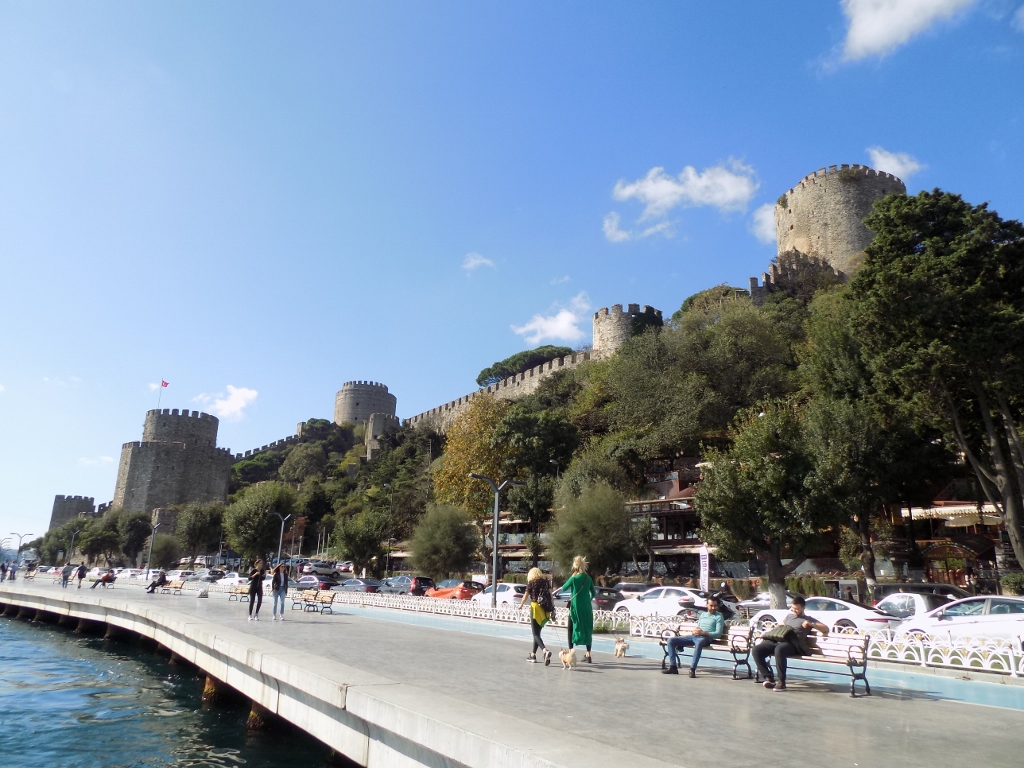 Rumeli Hisari
Rumeli Hisari
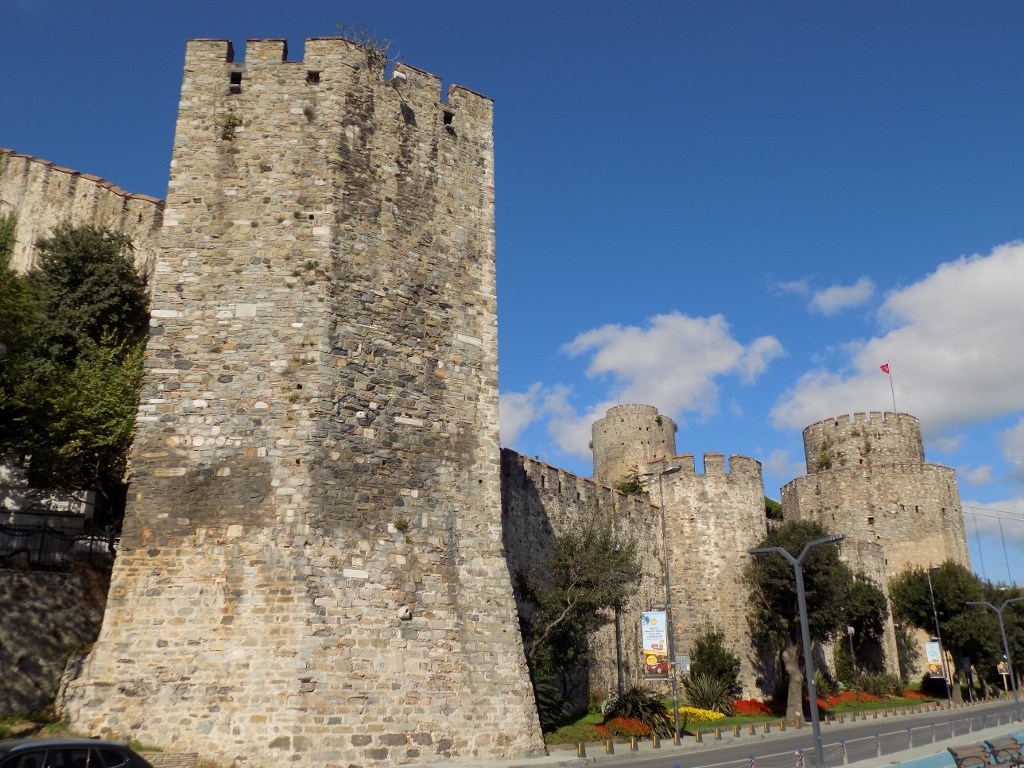 Rumeli Hisari
Rumeli Hisari
My original plan was to visit a couple of other interesting places along the European side of the Bosphorus, but eventually we visited “only” the Dolmabahçe Palace.